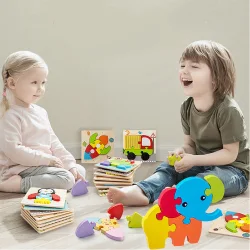What is considered an educational toy?
2023-10-21
Educational toys are toys specifically designed to facilitate learning and intellectual development in children. These toys are intended to be fun and engaging while also providing opportunities for children to acquire new knowledge, develop essential skills, and stimulate their cognitive, social, and emotional growth. Educational toys can cover a wide range of subjects and skills, and they are often tailored to different age groups and developmental stages. Here are some key characteristics that define educational toys:
1. Learning Objectives: Educational toys are designed with specific learning objectives in mind. They aim to teach children new concepts, skills, or knowledge in a structured and intentional way.
2. Age-Appropriate: Educational toys are age-appropriate and consider the developmental stage of the child. They align with the child's cognitive and physical abilities at a particular age.
3. Promote Creativity: Many educational toys encourage creativity and imaginative play. They allow children to explore, experiment, and think outside the box.
4. Hands-On Learning: These toys often provide hands-on learning experiences. They may involve building, problem-solving, experimentation, or other interactive activities that engage multiple senses.
5. Subject Variety: Educational toys can cover a wide range of subjects, including mathematics, science, language and literacy, geography, history, art, music, and more.
6. Skill Development: They help children develop various skills, such as fine motor skills, problem-solving skills, critical thinking, and social skills through cooperative play.
7. Stimulate Curiosity: Educational toys are designed to pique a child's curiosity and encourage them to ask questions and explore the world around them.
8. Interactive and Engaging: These toys are engaging and enjoyable, making learning feel like play rather than a chore.
9. Safety: Safety is a priority in the design of educational toys. They should be made from non-toxic materials and meet safety standards to ensure the well-being of children.
10. Teacher or Parental Involvement: Some educational toys may require guidance from a teacher or parent to maximize their educational value.
Examples of educational toys include building blocks, puzzles, science kits, musical instruments, board games, art supplies, language and reading games, and toys that teach mathematical concepts. Educational technology, such as educational apps and interactive educational software, also falls under this category.
Ultimately, educational toys aim to provide a balanced approach to learning by blending play and education, making the learning experience enjoyable and effective for children while fostering their development.



